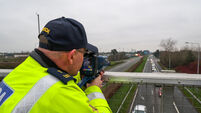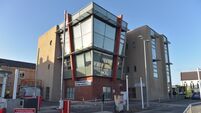Tourism has no identifiable environmental impact on Wild Atlantic Way sites, study finds

The lighthouse perched on The Old Head of Kinsale, County Cork. A study of 6,000 groups visiting 47 sites in Ireland along the Wild Atlantic Way found 75% of locations were not negatively impacted.
Tourist visits to environmentally sensitive areas such as those along the Wild Atlantic Way have no identifiable impact on such sites, according to new research.
A study conducted by Trinity College Dublin (TCD) of 6,000 groups visiting 47 sites in Ireland along the Wild Atlantic Way found 75% of locations were not negatively impacted.
The research found that rather than the belief that the volume of visitors was at fault, it is more likely that mismanagement of sites is to blame for the impacted areas.
As part of the study, the research team identified a list of commonly visited tourist attractions along the Wild Atlantic Way, Ireland’s coastal route which spans over 1600 miles.
PhD Candidate in Trinity’s School of Natural Sciences, and first author of the research article, Andrew Torsney, said: “Overall, our research offers hope that we can strive for no impact nature-based tourism and suggests that a widely held view that conservation and tourism cannot both flourish is false. In fact, given the increasing popularity of nature-based tourism, there is a real chance to boost the economy and the mental and physical well-being of visiting tourists while simultaneously protecting the environment and raising awareness of its importance.”
According to Mr Torsney, the best site located in Munster was that of Derrynane House, situated on the Iveragh Peninsula in Co Kerry, and one he described as a “hidden gem”.
Other notable spots included in the study were the Cliffs of Moher, the Old Head of Kinsale, Dursey Sound, and Bray Head in Kerry.
The research team compiled a list of 15 signature discovery spots, including Malin Head, Mizen Head, and Downpatrick Head, among others.
The study concluded that almost half of the protected areas in Europe and 58% of protected areas in Ireland are impacted by tourism and recreational activities.
Professor of Zoology at Trinity College Dublin, Yvonne Buckley, senior author of the research, said: “A third of all protected sites in Ireland are within 2km of the Wild Atlantic Way, so these results show that the majority of tourism impacts are likely due to the actions of a relatively low proportion of visitors undertaking high impact activities.
“By identifying the demographic and activity profiles that lead to impacts we can better manage them.”
Many of these tourist attractions that are used for high-impact activities such as jogging, hiking, and running can be impacted over time, although it is impossible to prevent.
Additional measures are needed to make informed decisions on the frameworks for tourism in terms of protecting sites to alleviate the threats posed by tourism.
The team aims to provide future research in which they examine the impact of various activities more closely across a wider range of tourist destinations in order to examine conservation and tourism goals as a whole.










